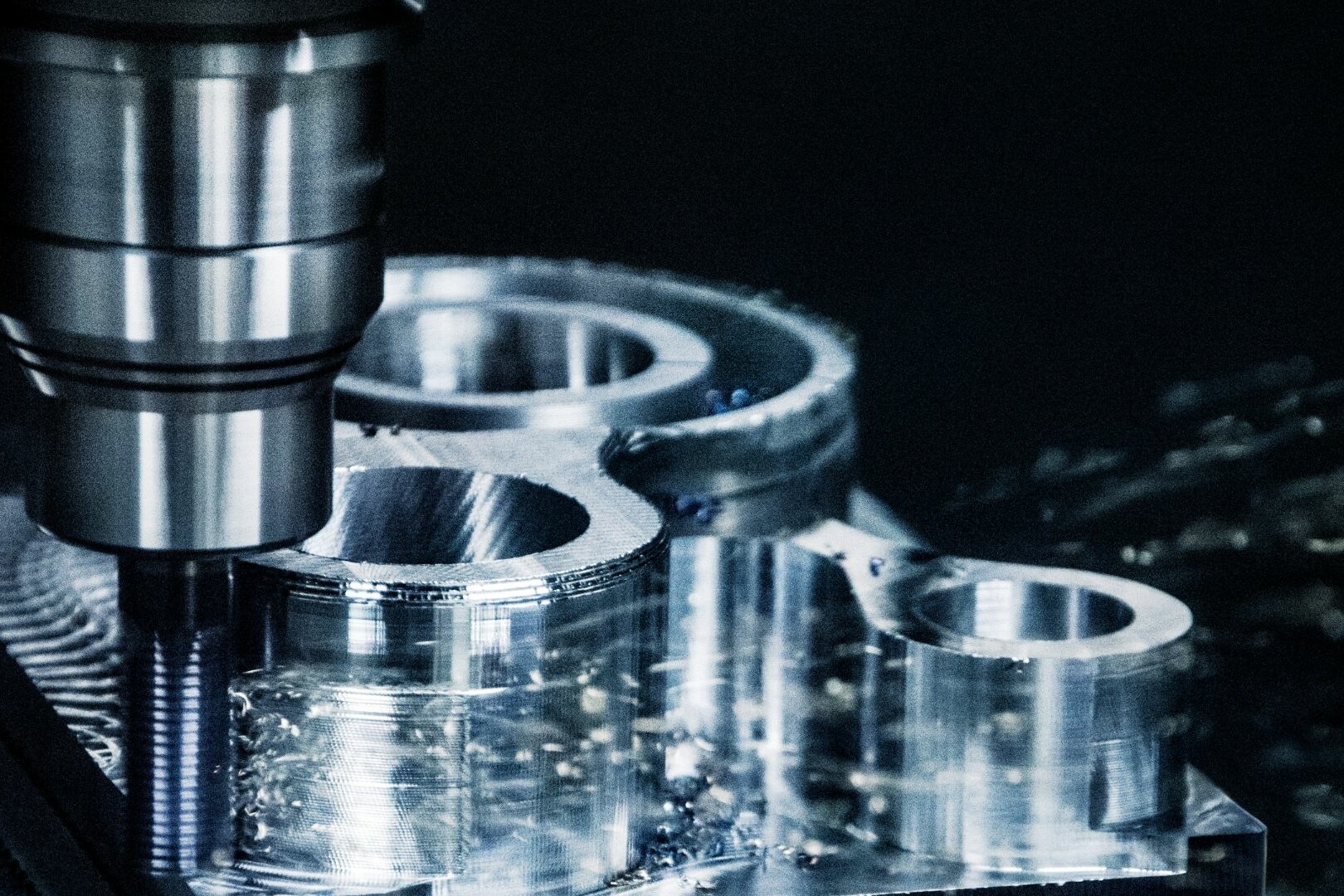From manufacturing plants to transportation systems, machines are the base of our modern society. However, these machines are not immune to wear and tear. Over time, they undergo stress, experience malfunctions, and eventually, break down. Condition Monitoring does not make machines immune but makes them more resillient.
When a critical machine in a factory suddenly stops working, causing production delays and financial losses. To prevent such catastrophes, machine maintenance ensures that machines are in optimal condition, running smoothly, and minimizing the risk of unexpected failures.
Traditional maintenance approaches, such as reactive and preventive maintenance, have been the norm for decades. However, these methods have their limitations. Reactive maintenance, also known as “run-to-failure,” involves addressing issues only after a machine breaks down. Preventive maintenance relies on regular inspections and maintenance tasks regardless of the machine’s actual condition. Both approaches are inefficient, costly, and often result in unexpected downtime.
This is where Condition Monitoring emerges as the future of machine maintenance. Condition monitoring is a proactive strategy that leverages advanced technologies to monitor machines’ condition in real-time. By continuously analyzing data and detecting early warning signs of potential failures, condition monitoring enables timely maintenance interventions, optimizing machine performance, and reducing downtime.
What is Condition Monitoring?
Condition Monitoring is an innovative maintenance strategy that aims to predict and prevent machine failures by monitoring the condition of machines in real-time. Unlike reactive or preventive maintenance, which rely on fixed schedules or unexpected failures, Condition Monitoring focuses on collecting and analyzing data about a machine’s performance, health, and environmental factors. This data is then used to identify patterns, trends, and anomalies, allowing maintenance teams to take proactive actions before failures occur.
Condition Monitoring is rooted in the idea of predictive maintenance, where maintenance activities are driven by the actual condition and behavior of the machine, rather than arbitrary schedules. By closely monitoring parameters such as temperature, vibration, pressure, fluid levels, and other critical variables, condition monitoring provides valuable insights into a machine’s health. It enables maintenance teams to intervene precisely when needed, preventing catastrophic failures, reducing maintenance costs, and optimizing overall machine performance.
Benefits of Condition Monitoring in Industrial Maintenance
Condition monitoring brings several significant benefits to machine maintenance practices:
Increased Equipment Reliability: By monitoring machines in real-time, condition monitoring enables the detection of potential issues at an early stage. This allows maintenance teams to address problems proactively, preventing unexpected failures and minimizing the risk of costly downtime.
Optimized Maintenance Planning: Condition monitoring provides data-driven insights that help optimize maintenance planning. Maintenance activities can be scheduled based on the actual condition of the machine, avoiding unnecessary inspections or part replacements. This leads to more efficient resource allocation and cost savings.
Cost Reduction: Condition Monitoring reduces maintenance costs by eliminating the need for reactive repairs and minimizing the likelihood of major breakdowns. By detecting issues early, maintenance interventions can be performed promptly, preventing small problems from escalating into more significant and costly failures.
Improved Safety: Faulty machines can pose risks to operators and other personnel. Condition Monitoring helps identify potential safety hazards by monitoring critical parameters and variables. This allows for timely maintenance actions to be taken, ensuring a safer working environment.
Enhanced Overall Equipment Efficiency: Condition Monitoring optimizes machine performance by ensuring that equipment operates at its peak condition. By detecting and addressing deviations or abnormalities in real-time, Condition Monitoring helps maintain optimal efficiency, reducing energy consumption and improving productivity.
How Does Condition Monitoring Work?
Monitoring Key Parameters and Variables
Condition monitoring relies on the continuous monitoring of key parameters and variables that are indicative of a machine’s health and performance. These parameters can vary depending on the type of machine and the specific industry. For example, in a manufacturing plant, parameters such as temperature, vibration, pressure, and fluid levels may be monitored. In a transportation system, variables like speed, fuel consumption, and engine performance may be crucial.
The selection of parameters to monitor is based on a thorough understanding of the machine’s design, operating conditions, and failure modes. By monitoring these key parameters, Condition Monitoring provides real-time visibility into a machine’s condition, enabling the early detection of abnormalities or deviations from normal operating parameters.
Collecting and Analyzing Data
To monitor the selected parameters, Condition Monitoring utilizes advanced sensors and data collection systems. These sensors are strategically placed on the machine to capture the necessary data points. The sensors can be wired or wireless, depending on the specific application and requirements.
The collected data is then transmitted to a centralized data storage system, where it is processed and analyzed. Condition Monitoring employs sophisticated data analytics techniques to identify patterns, trends, and anomalies in the data. This analysis involves comparing the collected data against established baselines or predefined thresholds to determine the machine’s health status.
While data collection and analysis are crucial aspects of Condition Monitoring, the true power of this maintenance strategy lies in its ability to predict failures and take proactive measures.
The Role of Predictive Analytics in Condition Monitoring
Leveraging Machine Learning and AI
Predictive analytics plays a significant role in Condition Monitoring by leveraging machine learning algorithms and artificial intelligence (AI) techniques. These advanced technologies enable the identification of patterns and trends in the collected data, empowering maintenance teams to predict potential failures before they occur.
Machine learning algorithms analyze historical data to learn the normal behavior of a machine and identify patterns associated with failures. By continuously comparing real-time data with these learned patterns, Condition Monitoring systems can detect deviations and anomalies that indicate the early stages of a failure. This proactive approach allows maintenance teams to take timely actions, such as scheduling maintenance activities or ordering replacement parts, before a failure disrupts operations.
Detecting Anomalies and Predicting Failures
Predictive analytics in CBM goes beyond simple anomaly detection. It can also predict the remaining useful life of components or the machine as a whole. By considering various factors such as operating conditions, usage patterns, and historical data, predictive models estimate the expected time until a failure is likely to occur. This information allows maintenance teams to plan and prioritize maintenance activities based on the urgency and criticality of potential failures and helps in implementing targeted corrective actions, addressing the root causes of failures and preventing them from recurring in the future.
Realizing the Potential of Condition Monitoring
Cost Savings and Increased Efficiency
By proactively addressing maintenance needs based on the actual condition of machines, organizations can avoid costly breakdowns and reduce unplanned downtime. This leads to improved productivity, optimized resource allocation, and ultimately, significant cost savings.
CBM allows for better planning and utilization of maintenance resources. Instead of conducting routine inspections or replacements, maintenance activities can be targeted and performed only when necessary. This eliminates unnecessary downtime and reduces the overall maintenance workload. CBM also provides insights into the health of machines, allowing for optimized scheduling of maintenance activities, such as parts replacement or equipment servicing.
Enhanced Machine Lifespan
With continuously monitoring key parameters and variables, organizations can detect and address potential issues at an early stage. Timely intervention prevents small problems from escalating into major failures, minimizing the wear and tear on machines. This leads to reduced equipment degradation and a longer lifespan.
CBM enables organizations to implement condition-based maintenance strategies, where maintenance actions are driven by the actual health and performance of machines. By addressing issues promptly, organizations can prevent the development of secondary failures that can arise from unresolved primary failures. This proactive approach helps in preserving the integrity and longevity of machines, avoiding premature replacements and associated costs.
Challenges in Implementing CBM
Data Collection and Integration
One of the primary challenges in CBM implementation is data collection and integration. CBM relies on collecting data from various sensors and monitoring devices. Ensuring accurate and reliable data collection can be complex, especially when dealing with a large number of machines or disparate data sources. Organizations need to establish robust data collection systems that can capture and transmit data in real-time, ensuring its availability for analysis and decision-making.
Integrating data from different sources, such as multiple machines or systems, can be challenging. Data integration requires the establishment of standardized formats, protocols, and interfaces to ensure compatibility and seamless data flow. Overcoming these integration challenges is essential for obtaining a holistic view of machine health and enabling comprehensive analysis.
Scalability and Infrastructure
As organizations aim to monitor a larger number of machines, scalability becomes a critical factor. This includes deploying an increasing number of sensors, handling large volumes of data, and managing the computational resources needed for real-time data analysis.
Organizations need to ensure they have the necessary infrastructure to support CBM implementation. This includes robust networking capabilities, data storage and processing capabilities, and sufficient computing resources. Adequate infrastructure is crucial for handling the data influx, running sophisticated analytics algorithms, and enabling timely maintenance decision-making.
Overcoming the Challenges
Building a Robust Data Infrastructure
To overcome the challenges associated with data collection and integration, organizations should focus on building a robust data infrastructure. This involves investing in reliable sensors and monitoring devices, establishing standardized data formats and protocols, and ensuring data transmission and storage capabilities. Additionally, organizations should implement data governance practices to maintain data quality, security, and privacy.
Collaborating with Technology Partners
To address scalability and infrastructure challenges, organizations can collaborate with technology partners who specialize in CBM solutions. Technology partners can provide expertise in deploying and managing large-scale CBM systems, ensuring compatibility with existing infrastructure, and optimizing resource utilization. Collaborating with experts in the field can accelerate the implementation process and help organizations navigate complex technological requirements.
Recommended Blog Posts
September 4, 2023
Powerful Signal Analysis Tools for Vibration Analysis
Predictive maintenance, crucial for machinery reliability, heavily relies on vibration analysis. Techniques like FFT…
September 4, 2023
Rotating Machinery Vibration Analysis
Vibration analysis is a critical tool in various industries like manufacturing, power generation, and transportation.…
December 28, 2022
Fault Diagnostic Technique Using Machine Mode Similarity Analysis
AI can diagnose machine faults with vibration data but machine mode similarity analysis is an alternative, it uses…
September 15, 2022
Understanding Rotating Machinery Data
Machine data is generated by physical attributes and actions of machines, collected by sensors and analyzed for…
August 6, 2021
Envelope Analysis
Bearings are critical elements in rotating machines, they support radial and axial loads, and reduce friction. Real…
May 6, 2021
What is Cepstral Analysis?
Cepstral Analysis, a tool used to detect periodicity in frequency spectrum, can be useful in gearbox fault detection in…
October 9, 2020
How is Fault Detection Performed?
Vibration measurements and analysis, using multiple parameters, can identify developing problems in machinery before…
September 21, 2020
Parameter Selections in Vibration Measurement
Vibration measurements are used to determine the response of machines to forces and identify potential issues. It is…
September 4, 2020
What is Vibration Analysis?
Vibration analysis can be used to discover problems in machines and predict when they might fail. It can significantly…
Sensemore Condition Monitoring Solution
If you enjoyed this blog, explore our Condition Monitoring Solution page.











